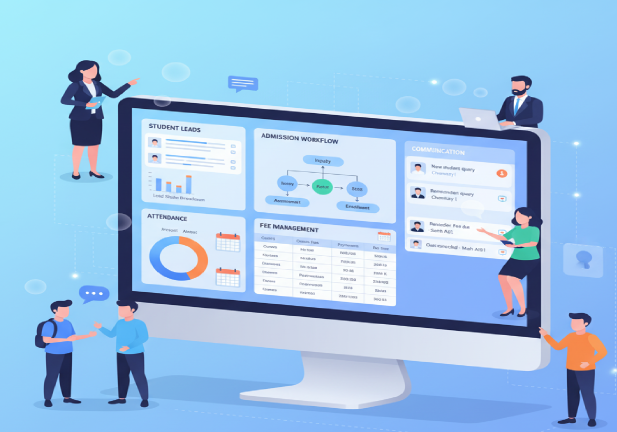Did you know that software developer hiring costs can vary by up to 400% depending on location, experience, and hiring model?
Planning your software development budget has never been more challenging. Developer salary ranges continue to evolve rapidly, with outsourcing costs fluctuating based on global economic shifts. Whether you’re a startup founder or an enterprise CTO, hiring tech talent without breaking the bank requires strategic planning and current market insights.
In fact, many companies underestimate their development expenses by 30-40%. This miscalculation often leads to project delays, quality compromises, or unexpected budget overruns. Understanding the true cost factors is essential for realistic financial planning and successful project completion.
This comprehensive guide breaks down exactly what you’ll pay for developers in 2025, examines key cost variables, and provides a practical calculator to estimate your specific hiring expenses. Let’s dive into the numbers that will shape your technology investment decisions this year.
How Much Do Software Developers Cost in 2025?
Software developer costs vary dramatically across regions, experience levels, and hiring models in 2025. Understanding these variations helps businesses make informed decisions when planning their technical recruitment strategy.
Average hourly rates by region
The geographical location remains one of the most significant factors affecting developer rates. North American developers command the highest fees, ranging from $80-$150 per hour, while Western European rates typically fall between $60-$120 per hour.
For more cost-effective options, businesses often look to Eastern Europe ($30-$60 per hour), Latin America ($25-$55 per hour), or India and Southeast Asia ($20-$45 per hour).
A closer look at specific countries reveals substantial differences:
| Country | Average Hourly Rate (USD) |
| United Kingdom | $96.75 |
| Canada | $94.67 |
| Australia | $93.25 |
| Switzerland | $90.00 |
| United States | $87.88 |
| Germany | $79.56 |
| India | $29.37 |
Additionally, rates vary within countries themselves. Major tech hubs like San Francisco and New York typically command premium rates of $100-$250 per hour, significantly higher than the national average.
Read also : Software Developer Hiring Costs Revealed
Annual salary benchmarks
According to the US Bureau of Labor Statistics, the median annual wage for software developers reached $133,080 in May 2024, reflecting the continued high demand for skilled developers.
Experience level creates substantial salary differences:
- Junior Developers (0-2 years): $40,000–$60,000 per year (~$20–$35 per hour)
- Mid-Level Developers (2-5 years): $60,000–$80,000 per year (~$30–$50 per hour)
- Senior Developers (5+ years): $80,000–$120,000 per year (~$40–$70 per hour)
Furthermore, specialized skills command premium compensation. AI/ML specialists often earn well over $100,000 annually due to increasing demand and relatively scarce expertise.
Meanwhile, regional differences remain prominent in annual salary benchmarks. While US-based developers typically earn between $100,000 and $180,000 per year , developers in other regions command significantly lower salaries:
- Latin America: $40,000-$80,000 per year
- Eastern Europe: $35,000-$75,000 per year
- Asia (India, Philippines, Vietnam): $20,000-$60,000 per year
Freelance vs full-time vs agency rates
The hiring model you choose significantly impacts overall costs. Each approach offers distinct advantages and cost structures.
In-house developers in the US typically cost $110,000-$180,000 annually, but this doesn’t include additional expenses like benefits, office space, equipment, and taxes—which can add 20-30% to total compensation .
Freelance developers offer more flexibility with rates ranging from $30-$150 per hour, depending on experience and specialization. This model works well for short-term or specialized projects where permanent staffing isn’t necessary.
Offshore development represents another cost-effective option, with annual costs of $20,000-$45,000 —substantially lower than US-based alternatives. However, this approach may introduce challenges with time zones, communication, and project management.
Agencies and outsourcing companies typically charge $40-$90 per hour, positioning themselves between freelancers and in-house teams. They provide structured support and scalable resources while managing the complexities of developer recruitment and retention.
Consequently, businesses must carefully weigh cost considerations against project requirements, timeline constraints, and long-term strategic goals when deciding which hiring model best suits their needs.
Key Factors That Influence Developer Costs
Understanding what drives software developer hiring costs beyond the raw numbers is essential for accurate budgeting. Four primary factors consistently stand out as the most influential variables affecting how much you’ll pay for development talent.
Location and cost of living
Geographic location primarily determines developer rates, with variations of up to 400% between regions. A developer in San Francisco might command a salary 40% higher than an equally skilled professional in Austin, Texas . This disparity stems from substantial differences in living expenses.
Western European developers typically charge $80-$150 per hour, whereas Eastern European talent costs significantly less at $30-$80 per hour [3]. Moreover, emerging tech hubs in Africa and Southeast Asia present growing talent pools at considerably lower rates.
Even within countries, location matters significantly. For instance, in Ireland, software developers in Dublin earn an average of €65,000 annually, compared to €56,905 in Galway. This reflects the concentration of tech companies and higher living costs in capital cities and established tech centers.
Experience and skill level
Developer experience creates a clear pricing hierarchy:
- Junior developers (0-3 years): Suitable for basic tasks, charging $50,000-$80,000 annually
- Mid-level developers (3-7 years): Offer a balance between cost and expertise at $60,000-$80,000 yearly
- Senior developers (7+ years): Command $90,000-$150,000 annually, delivering complex solutions and team leadership
Specialized skills notably increase costs. Machine learning engineers may earn $100,000-$150,000 annually, while full-stack developers typically earn $80,000-$120,000 . This premium reflects market demand for specialized expertise in emerging technologies like AI, blockchain, and cloud computing .
Read also : Most Popular Frameworks Dominating 2025
Project complexity and scope
Project complexity dramatically influences costs—basic websites might cost several thousand dollars, while advanced enterprise solutions can reach $1 million or more. Factors that increase complexity include:
- Uncertainty requiring adaptability to changing requirements
- Implementation of cutting-edge technologies
- Stringent security requirements
- Integration with multiple third-party services
The Bureau of Labor Statistics notes that accurate estimates heavily depend on detailed development plans. Projects requiring custom development from scratch typically cost significantly more than those leveraging existing solutions or templates.
Hiring model: in-house, freelance, or outsourced
The chosen employment model substantially impacts total costs:
The total hourly cost per team is approximately $1,050.26 for in-house development versus $300.00 for outsourcing to Europe. Nevertheless, each model presents distinct advantages beyond cost considerations. In-house teams offer greater control but require substantial upfront investment, whereas outsourcing provides flexibility and specialized expertise without long-term commitments.
Why Developer Costs Often Exceed Initial Estimates
Many businesses face the frustrating reality that software projects frequently exceed their allocated budgets. According to a McKinsey-Oxford study, IT projects in total had a cost overrun of USD 66 billion, which exceeds the GDP of countries like Luxembourg. Understanding why these overruns occur can help organizations better prepare their software development budgets.
Poor project planning
Inaccurate forecasting sets the stage for budget disasters. Studies show that 9 out of 10 large-scale projects experience overruns, with many reaching 50% or more. Specifically, the Project Management Institute found that for every USD 1 billion spent on projects in the U.S., roughly USD 122 million (12%) was wasted due to poor management and planning .
Poor initial estimates create a credibility problem that compounds over time. When teams consistently miss deadlines, stakeholders stop trusting their projections, creating a cycle of unrealistic expectations . Furthermore, nearly half of all technology development projects suffer from delays or budget overruns, primarily because of unrealistic timelines established during initial planning phases.
Hidden operational costs
Beyond the upfront development expenses, maintenance costs frequently represent the most underestimated component of software expenses. In reality, maintenance and support often comprise up to 90% of the total cost over the software’s lifecycle.
Training costs also catch many organizations by surprise. The average cost to recruit, hire, and train a new employee is USD 4,000, with tech industry costs typically running even higher. Companies must also consider infrastructure expenses that increase as operations scale, plus compliance and security costs that, if overlooked, can lead to expensive fixes later.
Communication and time zone issues
Communication failures contribute substantially to project overruns. Ascertra’s study revealed that ineffective communication significantly contributes to at least one-third of project failures. For offshore teams, these problems intensify as significant time zone differences create communication lags that decrease productivity.
The cost impact is substantial—rework consumes 40-70% of a software development project’s budget according to the International Journal of Software Engineering. This occurs primarily because requirements aren’t fully comprehended, creating a dangerous game of “telephone” where messages become distorted between business stakeholders and developers.
Scope creep and technical debt
Scope creep—the gradual expansion of project requirements without corresponding adjustments to resources or timelines—affects 52% of projects, up from 43% five years ago. Even small changes can have outsized impacts: what begins as a “minor tweak” often requires adjustments across multiple parts of the system.
Technical debt creates another hidden cost multiplier. For every dollar spent on developing new software, an additional USD 0.41 is incurred in technical debt . McKinsey research indicates technical debt can consume more than 20% of a development team’s capacity. In the long term, this leads to significant expenses:
- 50% of software development budgets are wasted on bug fixes instead of delivering business value
- Late-stage defect detection can be 100 times more expensive than catching bugs early
- Poor software practices silently drain billions from organizations annually
Initially, cutting corners might appear to save time and money, but ultimately leads to substantially higher costs. This reality underlies why so many software development projects, despite careful initial budgeting, end up exceeding their financial estimates.
Outsourcing vs In-House: Which Is More Cost-Effective?
The strategic choice between outsourcing and in-house development can dramatically impact your software development budget. Each approach offers distinct advantages, with cost implications that extend far beyond hourly rates.
Pros and cons of outsourcing
Outsourcing delivers significant cost advantages, with studies showing it can reduce operational costs by up to 60%. When comparing a standard 8-person Scrum team for a six-month project, the total hourly cost reaches approximately $1,050 for in-house teams versus just $300 for outsourcing to Europe .
On the positive side, outsourcing provides:
- Flexible hiring without long-term commitments
- Access to specialized expertise and global talent pools
- Quicker time-to-market with faster project kick-offs
Yet outsourcing brings challenges that can offset these savings:
- Potential communication barriers and time zone issues
- Security and intellectual property concerns
- Limited control over day-to-day operations
When to choose in-house teams
In-house development makes strategic sense primarily when:
- Software development represents your core business
- You require tight control over processes and outcomes
- Your workload remains stable and predictable
- You have access to local talent and sufficient budget
The true cost of in-house development extends beyond base salaries. The average European developer earns around €50K annually, while US developers command approximately $90K . Yet these figures typically multiply by 2.7x when accounting for benefits, office space, equipment, and operational expenses .
Blended team models
Increasingly, organizations implement hybrid approaches that capture benefits from both models. These blended teams combine in-house core members with outsourced specialists, offering a strategic middle ground.
Companies implementing blended team models report 30-45% cost savings while improving flexibility and access to specialized skills. This approach enables businesses to maintain knowledge continuity through core teams while gaining cost advantages from offshore resources.
For maximum effectiveness, successful blended implementations focus on:
- Face-to-face interactions bringing key team members together
- Cultural awareness and cross-cultural competence
- Shared travel responsibilities between locations
- Regular knowledge sharing and team-building activities
The choice ultimately depends on your specific business needs, project requirements, and budget constraints—each approach offers distinct advantages beyond pure cost considerations.
Rate Calculator: Estimate Your Developer Hiring Budget
Creating an accurate budget for developer hiring requires a systematic approach. Follow this four-step calculator process to estimate your costs with precision.
Step 1: Define your project scope
Begin by breaking down your project into specific components and tasks. This work breakdown structure makes estimation more manageable and accurate. Consider both project complexity and timeline requirements—more complex projects with cutting-edge technologies generally cost 30-50% more than simpler applications. Furthermore, accurately defining your scope helps prevent the costly problem of scope creep, which affects 52% of projects.
Step 2: Choose your hiring model
Each hiring approach offers distinct financial implications:
- In-house teams: Full-time developers cost $110,000-$180,000 annually in the US, plus 20-30% additional expenses for benefits and overhead
- Freelancers: Typically charge $30-$150 hourly depending on expertise
- Outsourcing: Can reduce operational costs by up to 60% compared to in-house development
- Dedicated teams: Offer middle-ground pricing with more structured support
Step 3: Select region and experience level
Developer rates vary substantially by location:
- North America: $70-125/hour for senior developers
- Western Europe: $45-80/hour for senior developers
- Eastern Europe: $30-59/hour for senior developers
- South Asia: $25-50/hour for senior developers
Experience level creates additional pricing tiers—junior developers typically cost 40-60% less than seniors across all regions .
Step 4: Calculate total cost
Essentially, your total budget calculation must include:
- Base development costs (hourly rate × estimated hours)
- Hidden operational costs (20-25% of base salary for recruitment )
- Project management overhead (typically 15-20% of development costs)
- Contingency buffer (add 15-20% for unexpected challenges )
For more precision, many organizations utilize dedicated cost calculators that factor in regional variations, skill requirements, and project complexity. Remember that the lowest hourly rate doesn’t necessarily translate to the lowest total cost—communication issues can increase expenses by 30-40% due to rework requirements.
At Corewave, we pride ourselves on being a global leader in software development services. With a presence that spans across the world, we deliver top-quality, innovative, and scalable software solutions tailored to meet the unique needs of businesses of all sizes. Our team of expert developers is dedicated to providing the most reliable and affordable software development services, ensuring that our clients receive nothing but the best—whether it’s mobile apps, web platforms, or custom enterprise software. Choose Corewave for world-class development, unmatched support, and solutions that drive real business growth.
Conclusion
Making Informed Developer Hiring Decisions
Understanding the true cost of software developers represents a critical first step toward successful project planning and execution. Throughout this guide, we’ve examined how developer rates vary dramatically across regions—from $20 hourly in Southeast Asia to $150+ in Silicon Valley tech hubs. Additionally, we’ve explored how experience levels create substantial pricing tiers, with senior developers commanding rates up to three times higher than their junior counterparts.
The choice between hiring models ultimately depends on your specific project requirements and business constraints. While outsourcing can reduce operational costs by up to 60%, in-house teams offer greater control and alignment with core business functions. Consequently, many organizations now implement blended team models that capture benefits from both approaches while mitigating potential drawbacks.
Budget overruns happen primarily because of four key factors: poor initial planning, unexpected operational costs, communication challenges, and scope creep. Therefore, accurate budgeting requires a comprehensive approach that accounts for all potential expenses beyond base salaries or hourly rates.
Most importantly, remember that the lowest hourly rate rarely translates to the lowest total cost. Hidden expenses like rework, recruitment, and project management can significantly impact your bottom line. The four-step calculator process outlined here provides a practical framework for estimating your developer costs with greater precision.
Software development remains both an art and a science—the same applies to budgeting for it. Careful planning, realistic expectations, and strategic hiring decisions will help ensure your technology investments deliver maximum value without breaking the bank. After all, successful development projects balance cost considerations with quality requirements and business objectives.












